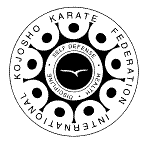



|
TRADITIONAL & CLASSICAL KARATE ONCE AGAIN
In the Spring 2009 IKKF newsletter, an attempt was made to inform students about what constitutes traditional vs classical Karate. That brought a wave of readersí questions, most centered around how some karate schools can claim to be ěclassicalî when their students strip to the waist to perform sword kata to rock music, while others claim be ětraditionalî and yet work almost exclusively on full contact or tournament fighting, performing Kata only early on to facilitate the teaching of combinations. There is not an easy method of labeling every Karate school, nor of devising rules that can be used to identify who is and who is not traditional or classical. Today the term traditional Karate is widely used to identify schools that work out in a place called a dojo, have a sensei, wear a gi, bow to each other, and support the notion that the Kata is the vehicle by which information is passed from master to students. The particular system of Kata or its nation of origin is not always a consideration, nor is there usually concern about the addition of Kata or other information from other sources. This sets these ětraditional Karateî schools apart from non-traditional schools who work out in a gym or club, wear shorts or other loose fitting clothes, touch gloves in place of bowing, and generally believe either that success in the ring is the only logical end goal of proper training or that self-defense based objectives always trump following traditional practices. While some of these clubs do don giís and fight in tournaments for the sake of training, they do not consider themselves to be traditional. Classical Karate schools try to offer instruction in an art that is done in a manner that is consistent not only with an old established Way, but with the most widely practiced version of a recognized classical martial art. Classical schools are almost always traditional, but traditional schools are not necessarily always classical. F. Absher
CLASSICAL WEAPONS KATA AND KOJOSHO KEMPO KARATE
In his last reprint (2003) of the Kojosho Kempo Karate book, Henry Soon reminds the reader that Kojosho Kempo weapons Kata are not classical weapons forms, but rather they are the integration of the basic classical weapon motions & techniques into the empty hand Kojosho forms. The result offers both an opportunity and a challenge for the Kojosho student to learn weapons handling. The fact that the Kojosho weapons Kata can be done with a partner gives the serious Kojosho student the chance to develop a feel for distance and timing that simply can't be gained without a partner. The variety of weapons that are studied in the Kojosho System provides the dedicated long-term student with additional insights into weapon fundamentals as well as subtle yet sophisticated technique, timing and strategy that can be applied to all Kojosho Kata. Itís a given that to fully learn to wield any of these weapons, a student will have to find and study under a recognized Master of that weapon. Where combat with weapons is concerned, there is no second chance. Weapons are designed for war. Do not think, even for a second, that learning a few pre-arranged forms, classical or not, prepares anyone for real combat. Having said that, the Kata is the primary vehicle used to convey information in traditional Karate systems. Karate Kata are used in many Okinawan weapons studies, and students are often encouraged to do the basic Pinion forms or other traditional Kata with weapons in order to learn weapons handling. Just remember - for even the most accomplished student of weapons, real mastery can come only from real combat. And real combat is not a Way, it's a war. F. Absher |